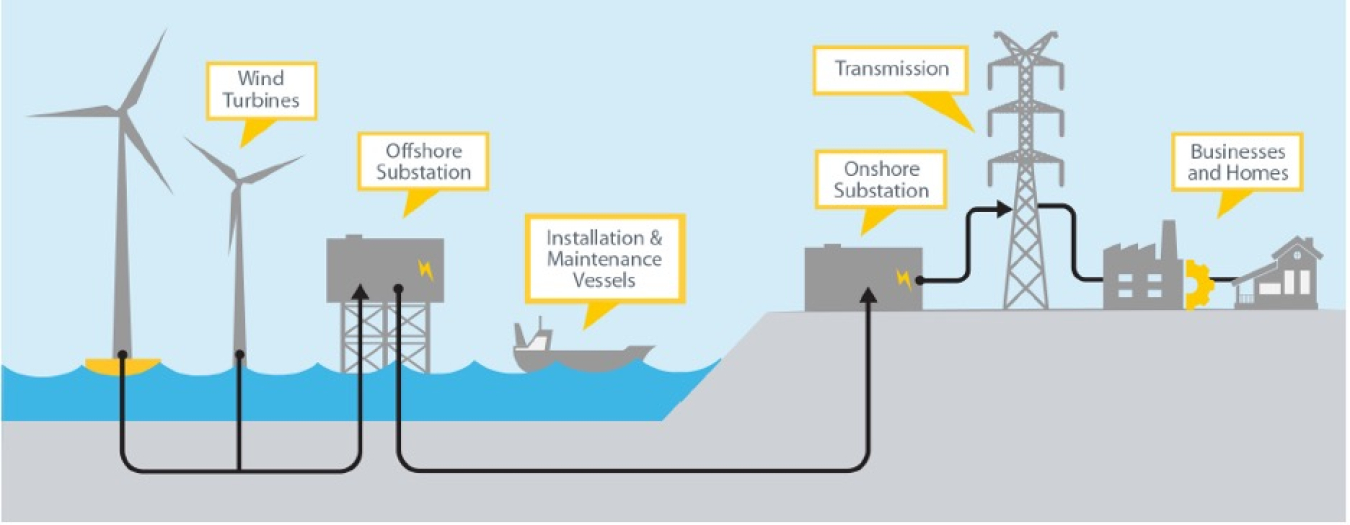Join the Atlantic Offshore Wind Transmission Workshop on June 28.
June 24, 2022Offshore wind (OSW) energy plays a crucial role in decarbonizing the electric grid, meeting our climate goals, and creating American jobs.
The Biden Administration set an ambitious goal to deploy 30 gigawatts (GW) of OSW by 2030, with an eye to deploy 110 GW or more by 2050. As a result, the U.S. Department of Energy (DOE) and the U.S. Department of the Interior (DOI) are working together to develop a joint plan to ensure that the nation builds the transmission infrastructure needed to meet these targets.
Electricity produced by OSW turbines travels to the shore through a series of transmission cables that can be buried in the sea floor. Currently, the U.S. has two operating OSW farms (which provide 42 megawatts [MW] of electricity or enough to power 20,000 homes), with over 30 OSW projects in the pipeline.

Figure 1. Major OSW power plant and transmission elements. Image created by Jennifer Breen Martinez, National Renewable Laboratory. Source: EERE Offshore Wind Energy Strategies Report (January 2022)
As we look to the future of OSW development in the United States, we know we will need to expand points of interconnection, upgrade portions of the onshore grid, and expand transmission infrastructure offshore. This leads us to some significant questions. How should we plan for connecting OSW turbines to the grid? Where can they most efficiently connect to the onshore electric grid to get power to homes and businesses? How can we design OSW transmission in a way that minimizes impacts on ocean co-users and the marine environment? How can we equitably deploy the OSW networks and train the workforce to install, operate, and maintain these systems?
These and other important questions cannot be answered without significant input from others: Tribal Nations; state and local governments; federal, state, and local agencies; utility regulators; electric grid system operators; technology researchers; project developers; equipment providers; international partners; fisheries organizations; regional ocean coordinators; non-governmental organizations; coastal communities; and of course, you!
DOE and DOI are leading an effort to bring stakeholders and decisionmakers together to tackle these questions about OSW transmission and will host a public webinar on Tuesday, June 28, 2022, from 12 p.m. to 4 p.m. ET. Current efforts focus on the Atlantic Coast where the most OSW projects and interest have been shown to date. All members of the public are encouraged to register and join, especially those who have an interest in OSW transmission, live on or near the Atlantic Coast from Maine to South Carolina, and/or participate in the marine economy.
This Stakeholder Partnership Workshop will focus on identifying strategies to support sustainable and equitable development of OSW transmission while minimizing impacts to ocean co-users and marine environments and creating benefits for coastal and underserved communities, and the Nation as a whole.
Learn more about the June 28 stakeholder partnership workshop and download the PowerPoint slides.

